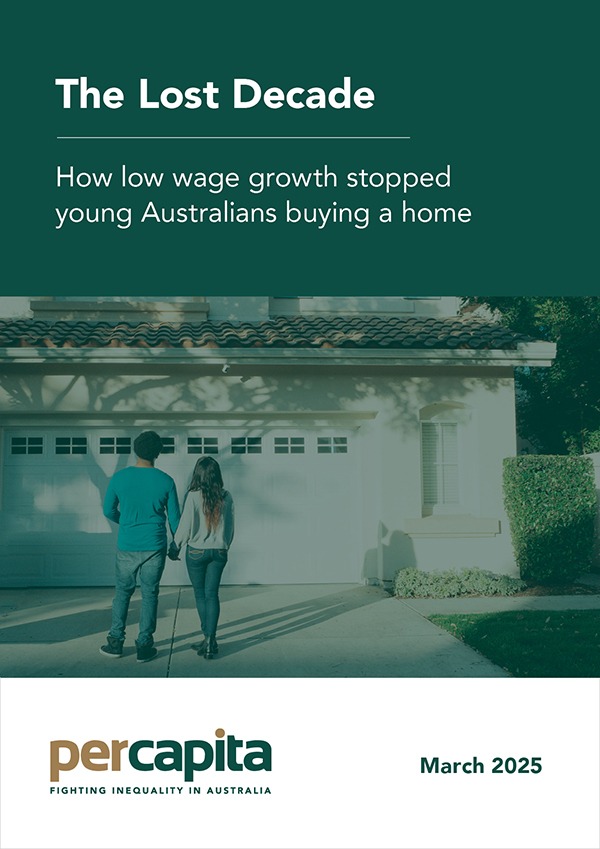This report examines the impact of a Lost Decade, during which real wages barely grew. It explores how this has affected young Australians setting out on their careers, trying to build the financial security needed to buy a home and start a family, and grasp the now elusive great Australian dream of home ownership.
Per Capita’s research reveals that workers’ purchasing power barely shifted in the ten years from 2012 to 2022, increasing by just 2.6% in total over that decade. On average, nominal wages grew 2.3% per annum, but adjusted for inflation, real wages increased just 0.2 % per annum.
In contrast, the purchasing power of workers increased by over 16% each decade in the 20 years prior (1991 – 2011). Over this period nominal wages increased on average by 4% per annum, and real wages by 1.4% per annum.
Our analysis shows that, if wages in the decade between 2012 and 2022 had maintained the growth rate of the previous two decades, the average full-time worker would be earning an extra $11,900 per annum today.
We find that the income lost by an average worker between 2012 and 2022 amounts to $54,000 in current dollar terms. For a young couple, the combined loss is roughly the equivalent to a 20% deposit on a $500,000 first home.
This amounts to more than $60 billion in current dollar terms per year in lost wages over the decade 2012 to 2022, representing over 3% of GDP per annum on average.
Extraordinarily this means more than $600 billion in wages were lost over the whole decade.
Those lost wages went to profits. The wages share fell approximately 3.6 percentage points of income from 2012 to 2022, while the profit share rose about 6.9 percentage points of income over the decade.
That trend has since been reversed, with wages increasing their share of national income by 3.8 percentage points between September 2022 and December 2024, while the profit share of income fell by 4.6 percentage points.
Over the same period, from September 2022 to December 2024, nominal wage growth has recovered to 4.4%, and wages have begun to grow in real terms while dwelling prices have moderated.
As a result, housing affordability is slowly improving for the first time in decades.

